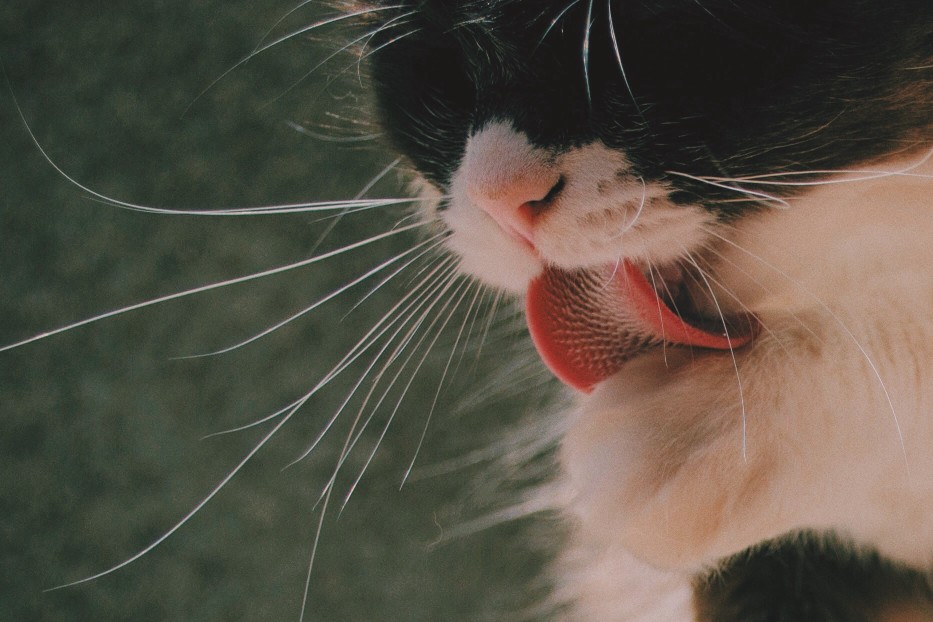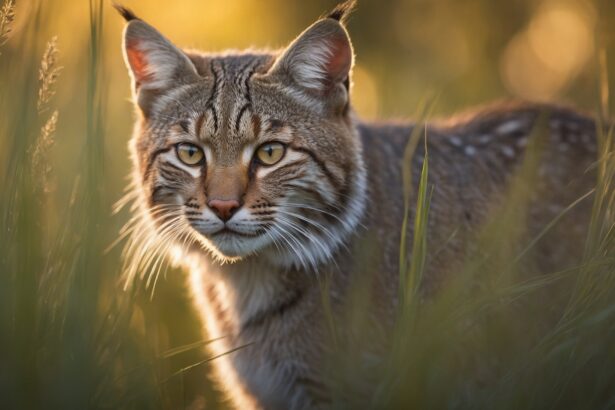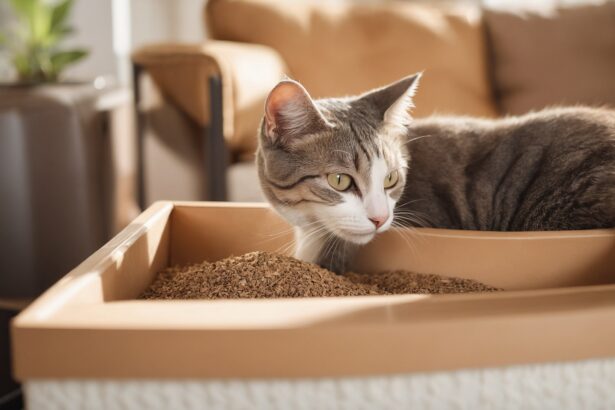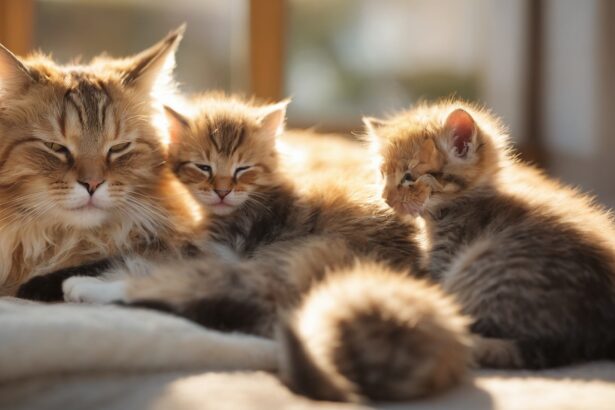Ever felt that little sandpaper kiss when your cat licks you? That tiny tongue is a multi-tool: part brush, part comb, part radiator… and 100% feline genius.
What a cat’s tongue looks like—and why it’s rough
A cat’s tongue is covered in backward-facing, keratinized papillae (think teeny, flexible hooks). They snag loose hair, lift dust and dander, and part the fur so saliva can reach the skin.
Researchers at the Georgia Institute of Technology found that some papillae act like tiny reservoirs, carrying saliva deep into the coat during grooming for efficient cooling and cleaning. Curious? Read the study.
And when your cat licks you? It’s usually a blend of bonding, self-soothing, and gentle marking. If you’re wondering about the meaning behind those sandpapery kisses, explore why cats lick us.
Hidden curiosities of the feline tongue
A high-precision brush in motion
Those hook-like papillae work like a super-fine comb, catching loose hair and dust, smoothing the coat, and spreading saliva that freshens and cools. It’s nature’s grooming kit.
Flip side? Swallowed hair can clump into hairballs. Regular brushing tailored to your cat’s coat length reduces shed buildup and makes grooming more comfortable.
Not sure where to start or which brush is best? Try our complete guide to cat grooming.
Sweet things? He doesn’t taste them
Surprising but true: cats don’t perceive sweetness. Their sweet-taste receptor isn’t functional, so desserts hold no flavor appeal.
Mistake to avoid: offering “just a bite” of cake or ice cream. Sugar (and often lactose) can upset digestion without offering any nutritional benefit.
Want to treat your cat? Opt for species-appropriate treats or a tiny piece of plain cooked chicken—always in moderation.
How cats drink (and why it’s mesmerizing)
Cats don’t scoop water; they tap the surface with the tongue tip, pull a column of water up by inertia, then snap the jaws shut at just the right moment. It’s fast, clean, and oddly hypnotic.
Practical tip: offer a wide, shallow ceramic or stainless-steel bowl, slightly elevated (about 10–15 cm). It’s whisker-friendly and helps keep the surface calm. In summer, a couple of ice cubes can encourage more sipping.
Wondering why many cats dislike getting wet? Take a peek at cats and water aversion.
Fun fact: some cats—especially orange or cream—develop harmless brown speckles on their lips, gums, or tongue, a pigment change called lentigo.
Why daily self-grooming matters so much
- Hygiene and skin health: grooming lifts dust, debris, and some surface parasites. A cleaner coat means fewer irritations and a healthier skin barrier.
- Coat care: the tongue detangles and aerates fur, limiting matting and helping regulate temperature.
- Social bonding: mutual grooming among cats reinforces trust and closeness—like a love language learned in kittenhood.
- Calming ritual: licking helps cats decompress after stress; think of it as feline self-care.
- Thermoregulation: as saliva evaporates, it cools the skin—a natural mini AC for hot days.
Original at-home tip: after playtime, do a 2-minute “mini spa.” Lightly mist a microfiber mitt with water and glide it along the coat in the hair’s direction. It grabs lingering loose hairs, mimics the tongue’s smoothing effect, and many cats accept it better when they’re relaxed post-play.
Seeing frequent hairballs or vomiting after grooming? Our guide on why cats vomit can help you pinpoint causes and act calmly.
Big no-no: don’t try to “clean” your cat’s mouth by brushing the tongue or using human toothpaste. That can irritate delicate tissues. For sudden bad breath, book a vet check to rule out dental or medical issues.
When to see the vet
Use your cat’s tongue as a little health barometer. A very pale or bluish tongue, ulcers, excessive drooling, sudden bad breath, or refusing food warrants a prompt visit.
If grooming turns compulsive, bald spots appear, or your cat hides to over-lick, stress might be involved. These signs of stress will help you decode what’s going on.
Does your cat sometimes leave a tiny tip of tongue peeking out? Adorable, yes—but it can have reasons. Here’s why cats stick out their tongues.
FAQ
Why is a cat’s tongue so rough?
Because it’s covered in backward-facing, keratinized papillae that grip hair and debris. They part the fur, spread saliva for cooling, and groom like a built-in brush.
Can my cat’s rough tongue irritate human skin?
Yes—after prolonged licking, especially on sensitive skin. Gently redirect with cuddles or a short play session and offer a break.
Do cats taste sweet—and are sweet treats safe?
No, cats don’t perceive sweetness. Desserts add sugar (and sometimes lactose) that can upset digestion. Stick to cat-safe treats instead.
When should I worry about my cat’s tongue?
See your vet if you notice a very pale/blue tongue, ulcers, excessive drool, sudden foul breath, or reduced appetite. Early checks prevent bigger issues.








